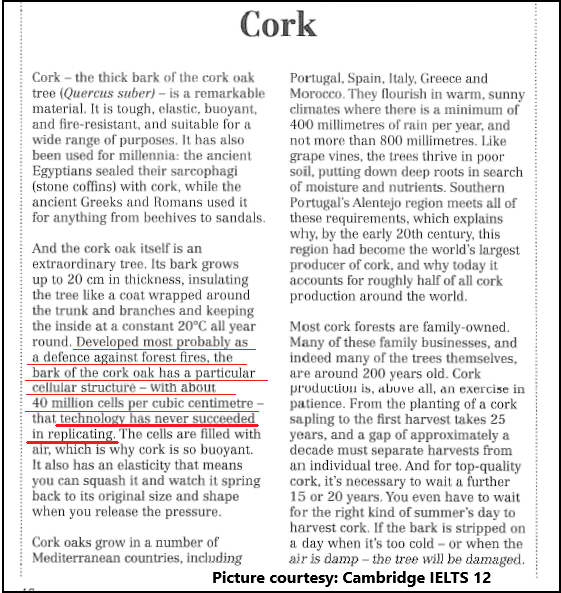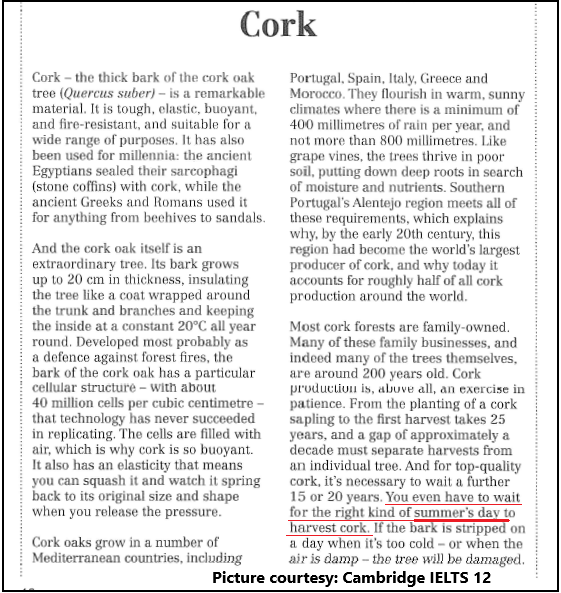IELTS Reading: how to find answers for TRUE, FALSE, NOT GIVEN or YES, NO, NOT GIVEN questions; best strategies, methods, tricks, and tips
This IELTS Reading post focuses on the strategies, tricks, methods, or techniques to find answers to TRUE, FALSE, NOT GIVEN or YES, NO, GIVEN questions. After reading the post and applying the methods or strategies, IELTS candidates should be successful to locate the answers to TRUE, FALSE, NOT GIVEN or YES, NO, GIVEN questions.

Answering TRUE, FALSE, NOT GIVEN can be quite tricky and candidates must practice well and get ready to face such type of questions in a real test situation.
Here, I would like to share with you some strategies which may help the candidates to understand this question better and practice it without much difficulty.
Difference between TRUE, FALSE, NOT GIVEN and YES, NO, NOT GIVEN:
In TRUE, FALSE, NOT GIVEN the candidates are asked to match factual information from the passage.
In YES, NO, NOT GIVEN the candidates are asked to match the writer’s opinions from the passage.
For this exercise, I am taking a sample from Cambridge IELTS Series 12. In this book Reading Test 5 has several TRUE, FALSE, NOT GIVEN, or YES, NO, NOT GIVEN questions.
Let’s have a look at the first passage of Reading Test 5.
The title of the passage is ‘Cork’.
DO NOT READ THE PASSAGE. Only think about the title; if it is unfamiliar or unknown to you, just read the first paragraph to recognize the idea of the passage topic. DO NOT READ any other paragraph; it will kill your valuable time.
GO STRAIGHT TO THE QUESTIONS. Here is a screenshot of questions 1-5.

Now, let us take a look at the first question and ANALYZE the sentence. It says,
The cork oak has the thickest bark of any living tree.
If we take a close look at the question, we can see some special words or phrases. Let’s scan the question to find those KEYWORDS or PHRASES.
The cork oak has the thickest bark of any living tree.
We find three parts in the question to think about. They are ‘the cork oak’, ‘the thickest bark’, and ‘any living tree’.
The answer will be TRUE if we find any information which indicates that no other living plant/tree in the world has as thick bark as the cork oak tree has.
It will be FALSE if any information in the passage suggests that there is another tree or there are other trees that have or have bark thicker than the cork oak tree.
The answer will be NOT GIVEN if there is no such comparison of the thickness of cork oak with other trees or trees.
Now let us have a look at the original text and scan for the information.

As the text is about ‘cork’, there is no point looking for the word; it will be everywhere. However, we can look for the words ‘thickest’ and ‘living tree’. The words ‘thick’ is found in line 1 of paragraph no. 1. But we do not see any comparison here; we only find some information about the cork tree. “Cork – the thick bark of the cork oak tree (Quercus suber) – is a remarkable material.. .. .. .”
We read further and in paragraph 2 line 3, we find the word ‘thickness’. Here, we find how thick a cork oak tree can be. “And the cork oak itself is an extraordinary tree. Its bark grows up to 20cm in thickness, insulating the tree like a coat wrapped around the trunk and branches and keeping the inside at a constant 20°C all year round.” There is no mention of any living tree or any comparison between the cork oak tree and any living tree. What do you think the answer will be?
The answer is NOT GIVEN.
Do you understand?
Let us take a look at the next question. It says,
Scientists have developed a synthetic cork with the same cellular structure as natural cork.
Let us select the KEYWORDS.
Scientists have developed a synthetic cork with the same cellular structure as natural cork.
Here, the question says that scientists have been successful to create a duplicate cork that has a similar type of cellular structure to natural cork. We have to look for words like cellular structure to find the answer.
Now let us have a look at the original text.

“Developed most probably as a defense against forest fires, the bark of the cork oak has a particular cellular structure – with about 40 million cells per cubic centimeter – that technology has never succeeded in replicating.” This means the cork oak tree has a special cellular structure that technology did not manage to replicate (copy) yet.
So, the lines directly contradict the given statement. The answer is FALSE.
TIPS:
1. You must never think that you will find every answer directly by looking for exact KEYWORDS. In most cases, the KEYWORDS in the question WILL NOT BE THE SAME in the text. You must look for synonyms. For example, in this question, we have found words like “scientists” but in the original text this has been replaced by “technology”.
2. TRUE, FALSE, NOT GIVEN, or YES, NO, NOT GIVEN questions generally maintain a sequence. For example, if you do not find the answer to question 2, but you can find answers to questions 1 and 3, be sure that the answer is between the lines where you have found answers for questions 1 and 3. Probably, you have missed any synonyms or any key information.
Now, you try to do question no. 3.
Individual cork oak trees must be left for 25 years between the first and second harvest.
The answer will be at the end of the post. Resist looking at the answer sheet now. You can do it after we complete this exercise.
Remember the strategies:
1. Scan the question and locate the keywords or phrases.
2. Look for the keywords just after the lines where you have found the answer to question no. 3.
3. Do not read more than one or two paragraphs. This is Reading Passage 1 and the answers will be close together and the difficulty level is easy, just like the first levels of any Android game.
4. Look for synonyms like ‘copy’, ‘replica’, ‘replicate’, or ‘duplicate’ for the word ‘similar’. Look for ‘not expensive’, ‘inexpensive’, ‘Costless’ for the word ‘cheap’.
5. If you find the answer, underline the lines with a pencil and write the number of questions close to it.
6. Thus, go to the next question and do the same.
We shall look at question no. 4 here.
It says,
Cork bark should be stripped in dry atmospheric conditions.
Let us scan the statement and locate the keywords.
Cork bark should be stripped in dry atmospheric conditions.
It means the bark of cork trees should be stripped or torn off in a climate that is dry. Think about the weather condition when everything is dry.
Now, let us look at the original text.

In paragraph no. 4, lines 12-14 say, “You even have to wait for the right kind of summer’s day to harvest cork.” This means cork cannot be harvested if the season is not summer or dry season.
The sentence has a direct match with the question statement.
So, the answer is TRUE.
The last question (Question No. 5) is for you to practice.
I sincerely hope that this short lesson has given you some idea about how to practice this TRUE, FALSE, NOT GIVEN question. Apply the same strategies in your own IELTS books and you will find all the answers easily. You can also apply the same strategies in YES, NO, NOT GIVEN.
Here are the answers for Questions 1-5 of Reading Passage 1 in TEST 5, Cambridge 12.
1. NOT GIVEN
2. FALSE
3. FALSE
4. TRUE
5. TRUE
If you like this post or find it useful, please make comments below.




Very useful.
Please write about Matching Headings and provides us essestial tips on Identifying information!
Very very useful and helpful.
Thank you. Please refer to others.